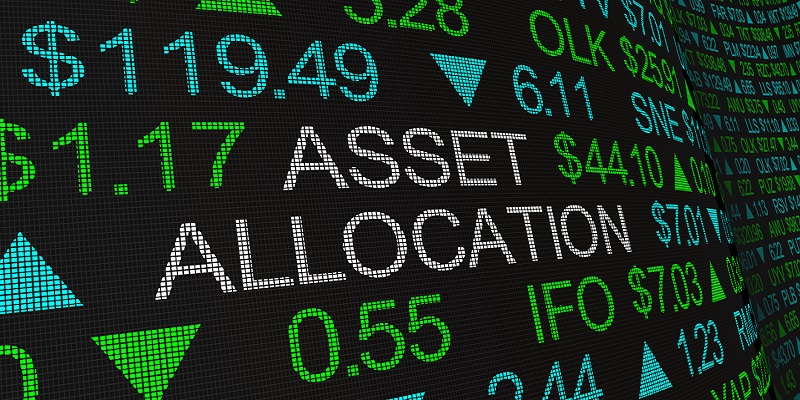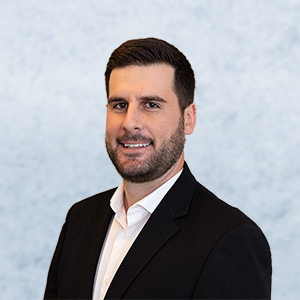If you’re one of the 5,000+ readers who watched RiskHedge publisher Dan Steinhart’s “anti-newsletter” announcement...
You may be wondering...
What’s happening to RiskHedge?
Anyone who’s been with us for a while knows we focus primarily on disruptive tech opportunities—the exciting stocks and cryptos changing the world.
Dan’s new approach is nothing like that.
It has nothing to do with picking individual stocks or betting on the next big megatrend.
In fact, it’s unlike anything we’ve ever done at RiskHedge.
Because this new approach is so different, I’m bringing Dan back in to share more about this method... including why he chose to launch it now, in the middle of a bear market... and how it “fits in” with our other RiskHedge advisories.
***
Chris Reilly: Dan, your new advisory, Cornerstone Club, is completely different from anything else we publish. Or anything anyone publishes, for that matter.
It’s almost an “anti-newsletter.” You don’t do any pontificating or trading. You don’t even recommend stocks.
Yet you say, “The world’s worst stock picker can easily retire rich by following it.”
Can you explain?
Dan Steinhart: I’m convinced most people are hardwired to be terrible investors. Even very smart people who are extremely successful in other walks of life—doctors, CEOs, PhDs—are often bad at investing.
Think about this: If you put just $1,000 in the S&P 500 in 1950, you’d have $2.2 million today. I’m not saying $1,000 a year. By investing $1,000 in the market one time and leaving it alone, your money grew to $2.2 million.
Almost anyone can do that. Yet most people do not retire comfortably, let alone rich. The average 60-year-old has about $400,000. Forbes says you need $1.7 million to retire.
What’s the problem?
Some people fail to save and invest. We can’t help them.
But most Americans work hard, save, and try to invest right.
Simply put, they’re focused on the wrong thing. They’re focused on picking stocks.
They’re so concerned with choosing between Tesla, Amazon, or Berkshire Hathaway, they’re missing what REALLY matters.
Chris: Which is?
Dan: It’s 1,000X more important to focus on how much of which different types of investments you own.
You’ve probably heard this referred to as “asset allocation.”
A study from the Financial Analysts Journal concluded that 94% of the variation in a portfolio’s returns come from asset allocation. Stock picking and market timing, together, accounted for just 6%.
In other words, compared to asset allocation, stock picking barely matters. While stock picking is a good source of entertainment... it’s simply not an important driver of most people’s investing returns.
Chris: Asset allocation is.
Dan: Right. The Cornerstone system starts from a proven principle: To have the most robust portfolio, you should own a mix of quality financial assets from all over planet earth.
“Mix” means you don’t just own stocks. You must own all the major asset classes: stocks, bonds, commodities, and real estate.
“All over planet earth” means you don’t just own investments from your home country. Americans should own stocks from emerging markets and Europe. They should own foreign bonds. They should own a mix of quality assets from everywhere.
BUT—and this is where many folks go wrong—you don’t need to own everything all the time. There’s a time for every investment.
Chris: And Cornerstone puts you into the right investments at the right time.
Dan: Exactly. There’s a time when it’s profitable to own emerging market stocks… like April 2005 to October 2007 when they soared 156%. There’s a time NOT to own emerging market stocks… like November 2007 to November 2008 when they fell 69%.
The Cornerstone system sorts this out for you. It tells you what to invest in, and when. If a major asset class is “working” somewhere in the world (prices are going up), Cornerstone makes sure you own it. And it ensures you don’t own falling or underperforming assets.
Chris: The proof you showed in your presentation is pretty remarkable. Especially how Cornerstone performs during major market crashes.
Take the 2008 crisis. The S&P 500 crashed as much as 57% and didn’t recover until 2013. Cornerstone, on the other hand, would have fully recovered its small losses in just 9 months before powering ahead and never looking back.
Or the “the lost decade”—the period from 2000‒2013, which really lasted 12 ½ years. Cornerstone truly shined. It would have soared 300% during that time, while the S&P 500 produced zero returns.
So, Dan... if Cornerstone performs exceptionally well during rough markets like today...
Why are we just telling readers about Cornerstone now?
Dan: Yeah, “Where were you in April, Dan?” It’s a valid question.
Although I’ve been personally using this method successfully since 2016... I’d never seen it in action in a real, prolonged bear market. I didn’t feel comfortable sharing Cornerstone until I put my own real money on the line through an actual bear market.
Now, I can confirm it let me sail right through this bear market. More specifically, I barely experienced any losses in 2022, which has been the worst year since the Great Depression for a 60/40 stock-bond portfolio. And I know, with close to 100% certainty, that I’ll be among the first to profit when markets turn up.
So now, I’m bringing other serious investors into Cornerstone with me.
Chris: How does Cornerstone fit in with the rest of our advisories?
Dan: Cornerstone is a strategy for your core portfolio. If RiskHedge is a tree—Cornerstone is the roots and the trunk. Our other services are the branches. I recommend using Cornerstone to manage part of your core portfolio, and building around it with our other, more specialized ideas.
By the way—I said before stock picking barely matters. That’s a slight exaggeration. There are corners of the market where a great analyst can carve out a true edge: cryptos, microcaps, tech disruptors, trading. Our RiskHedge analysts are some of the best in the business. Their services are designed to enhance the returns of your portfolio with higher-upside ideas.
Chris: Thanks, Dan. I know your presentation won’t be available much longer. Readers can access it here.
Dan: And for those who want to know the 13 asset classes within Cornerstone—here they are with their respective ETFs:
1. Big US value stocks (IWD)
2. Small US value stocks (IWN)
3. US momentum stocks (MTUM)
4. US small-cap stocks (IWM)
5. Foreign developed market stocks (VEA)
6. Foreign emerging market stocks (VWO)
7. US 7–10 year gov’t bonds (IEF)
8. US 20+-year gov’t bonds (TLT)
9. US corporate bonds (LQD)
10. Foreign gov’t bonds (BNDX)
11. Real estate (represented by REIT – VNQ)
12. Commodities (DBC)
13. Gold (GLD)
These 13 sectors represent the “world” of investments available to you and me and everyone else.
You can trade in and out of these ETFs fee-free in your favorite low-cost brokerage account... including your IRA or 401(k).
But I explain in more depth how it all works in my presentation.
Chris Reilly
Executive Editor, RiskHedge



